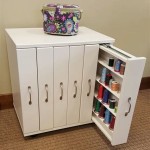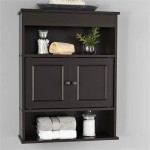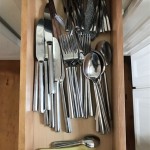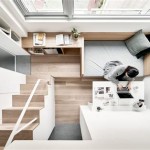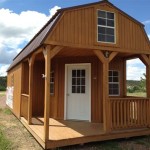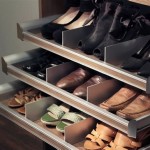DIY Toy Storage Ideas for Small Spaces
Toy storage presents a common challenge, particularly in homes with limited square footage. The accumulation of toys, games, and other playthings can quickly lead to clutter and disorganization, making it difficult to maintain a tidy and functional living space. However, with a bit of ingenuity and DIY spirit, it is possible to create effective and aesthetically pleasing toy storage solutions that maximize space and minimize clutter. This article will explore various DIY toy storage ideas specifically tailored for small spaces, offering practical strategies and creative approaches to effectively manage toy collections.
The key to successful toy storage in compact areas lies in maximizing vertical space, utilizing multi-functional furniture, and employing creative organizational techniques. By thinking outside the traditional toy box, individuals can design custom storage solutions that seamlessly integrate into their existing décor while providing ample space for all manner of toys. The following sections detail actionable DIY projects and concepts to conquer the toy storage dilemma in smaller homes.
Maximizing Vertical Space with Wall-Mounted Storage
One of the most effective strategies for small space organization is to leverage vertical space. Walls often remain underutilized, representing a significant opportunity for storage. Wall-mounted storage solutions keep toys off the floor, freeing up valuable surface area and visually expanding the room.
Consider repurposing existing shelving units by mounting them higher on the wall. Standard bookshelves can be transformed into floating shelves, offering a stylish and functional storage option. For a more customized approach, build your own shelving system using lumber and brackets. Ensure that the shelves are securely mounted to the wall studs to support the weight of the toys. Varying the depth and height of the shelves can accommodate different sizes and types of toys.
Another option is to create a series of wall-mounted baskets or bins. Wire baskets, fabric bins, or even repurposed metal buckets can be hung on the wall using hooks or brackets. These are ideal for storing smaller items like stuffed animals, blocks, or art supplies. Labeling each basket or bin promotes organization and encourages children to participate in the cleanup process.
Pegboards offer a highly versatile wall storage solution. They can be customized with hooks, baskets, and shelves to accommodate a variety of toys. The modular nature of pegboards allows for easy rearrangement as the toy collection evolves. Pegboards are particularly useful for storing art supplies, tools, or building sets.
Finally, consider creating a custom wall-mounted toy display. This could involve building a series of small niches or cubbies in the wall to showcase favorite toys. This option not only provides storage but also adds a decorative element to the room. Ensure that the display is designed with safety in mind, avoiding sharp edges or protruding elements.
Utilizing Multi-Functional Furniture for Integrated Storage
Multi-functional furniture offers a dual purpose: providing seating, sleeping, or workspace while simultaneously incorporating storage. This is a particularly valuable approach for small homes where space is at a premium.
Ottomans with built-in storage are a classic example of multi-functional furniture. These can be used as footrests, extra seating, or even coffee tables, while the interior provides ample space for storing toys, blankets, or games. Consider building a custom ottoman with a hinged lid or removable top for easy access to the stored items.
Benches with storage are another versatile option. They can be placed in entryways, bedrooms, or playrooms, providing seating and storage in one. The storage compartment can be located under the seat, accessible by lifting the lid, or it can consist of a series of drawers or shelves built into the base of the bench. Building a bench with storage is a relatively simple DIY project that can significantly increase storage capacity.
Consider integrating storage into existing furniture. For example, add baskets or bins underneath a coffee table or side table to store toys. A simple fabric skirt can be used to conceal the storage underneath, creating a more polished look. Similarly, bed risers can be used to elevate a bed, creating extra storage space underneath for bins or drawers filled with toys.
Another option is to build a custom headboard with built-in shelves or cubbies. This can provide valuable storage space for books, toys, or other items, particularly in a small bedroom. Ensure that the headboard is securely attached to the bed frame and that the shelves are designed to safely hold the weight of the stored items.
Finally, explore the possibility of creating a custom play table with built-in storage. This can be a simple table with a storage bin underneath or a more elaborate design with multiple drawers and shelves. A play table with storage provides a dedicated space for children to play while keeping their toys organized and accessible.
Employing Creative Organizational Techniques for Toy Management
Organization is as important as the storage solution itself. Implementing effective organizational techniques ensures that toys are easily accessible, properly maintained, and readily returned to their designated storage space. This approach will decrease clutter and promote a more orderly environment.
The first step in any organizational process is to declutter. Regularly sort through the toy collection, removing broken or unwanted items. Donate or discard toys that are no longer used or enjoyed. This reduces the overall volume of toys that need to be stored, making it easier to manage the remaining items.
Once the toy collection has been decluttered, categorize the remaining items. Group similar toys together, such as building blocks, dolls, vehicles, or art supplies. This makes it easier to find specific toys when needed and also simplifies the storage process. Consider using different colored bins or labels to further differentiate the categories.
Implement a rotation system for toys. Divide the toy collection into smaller groups and store some of the groups out of sight. Rotate the groups periodically, bringing out a new set of toys while storing away the old ones. This keeps the toy collection feeling fresh and exciting, preventing children from becoming overwhelmed by too many options.
Consider using clear storage containers. Clear containers allow you to easily see what is inside without having to open them. This makes it easier to find specific toys and also helps to prevent toys from getting lost or forgotten. Label each container with a description of its contents to further enhance organization.
Encourage children to participate in the cleanup process. Make it a habit to put toys away after each play session. Provide children with designated storage spaces for their toys and teach them how to organize their belongings. Make cleanup fun by turning it into a game or setting a timer. A consistent effort to maintain organization will prevent clutter from accumulating and keep the toy collection under control.
Utilize under-bed storage creatively. Shallow bins or drawers designed to fit under beds are a valuable tool for storing larger, flatter items like puzzles, board games, or art supplies. These containers slide easily in and out, providing easy access to the stored toys while maximizing space.
Employ door organizers. Over-the-door organizers, typically used for shoes, can also be adapted for toy storage. These organizers are particularly well-suited for storing small toys, dolls, or art supplies. The clear pockets allow for easy visibility and access to the stored items.
Repurpose existing containers. Look around the house for containers that can be repurposed for toy storage. Empty diaper boxes, shoe boxes, or plastic tubs can be transformed into functional storage containers with a little creativity. Decorate the containers with paint, fabric, or paper to match the room's décor.
Consider using mesh bags. Mesh bags are ideal for storing stuffed animals or other soft toys. The mesh allows air to circulate, preventing dust and mildew from accumulating. Mesh bags can be hung on hooks or stored in bins or baskets.
Finally, embrace the concept of minimalist toy storage. While it may not be feasible to completely eliminate toys, strive to limit the number of toys in the home. Purchase toys that are versatile and engaging, rather than those that are quickly discarded. Encourage children to value quality over quantity when it comes to their toys. A smaller, more curated toy collection is easier to manage and less likely to contribute to clutter.

Toy Storage Ideas For Small Spaces Mommyhooding Diy Rooms

26 Ways To Organize Toys In Small Spaces Toy Organization Space Kids

11 Awesome Toy Storage Ideas For Small Spaces The Organized Mom

30 Best Toy Storage Ideas Diy Kids Room Organizer

Easy Toy Storage Ideas And Tips Best Organizers Bins

My Top 10 Easy Diy Toy Storage Ideas Design Improvised

21 Diy Toy Storage Ideas To Take Control Anika S Life

20 Diy Toy Storage Ideas For Small Spaces The Handyman S Daughter

Best Toy Storage Ideas Busy Toddler

30 And Easy Clever Toy Organization Ideas You Need To Know Kids Diy Storage
Related Posts


